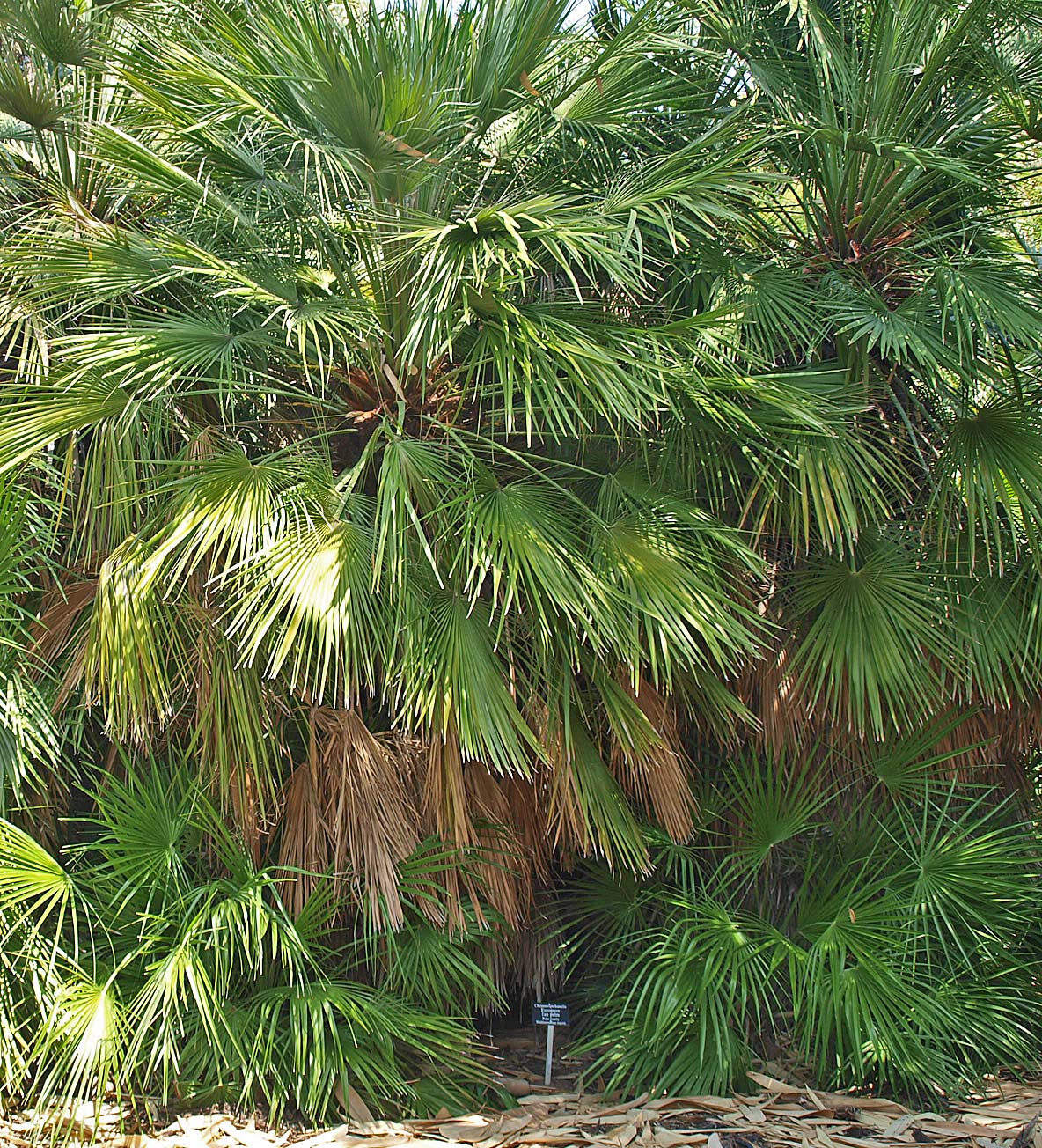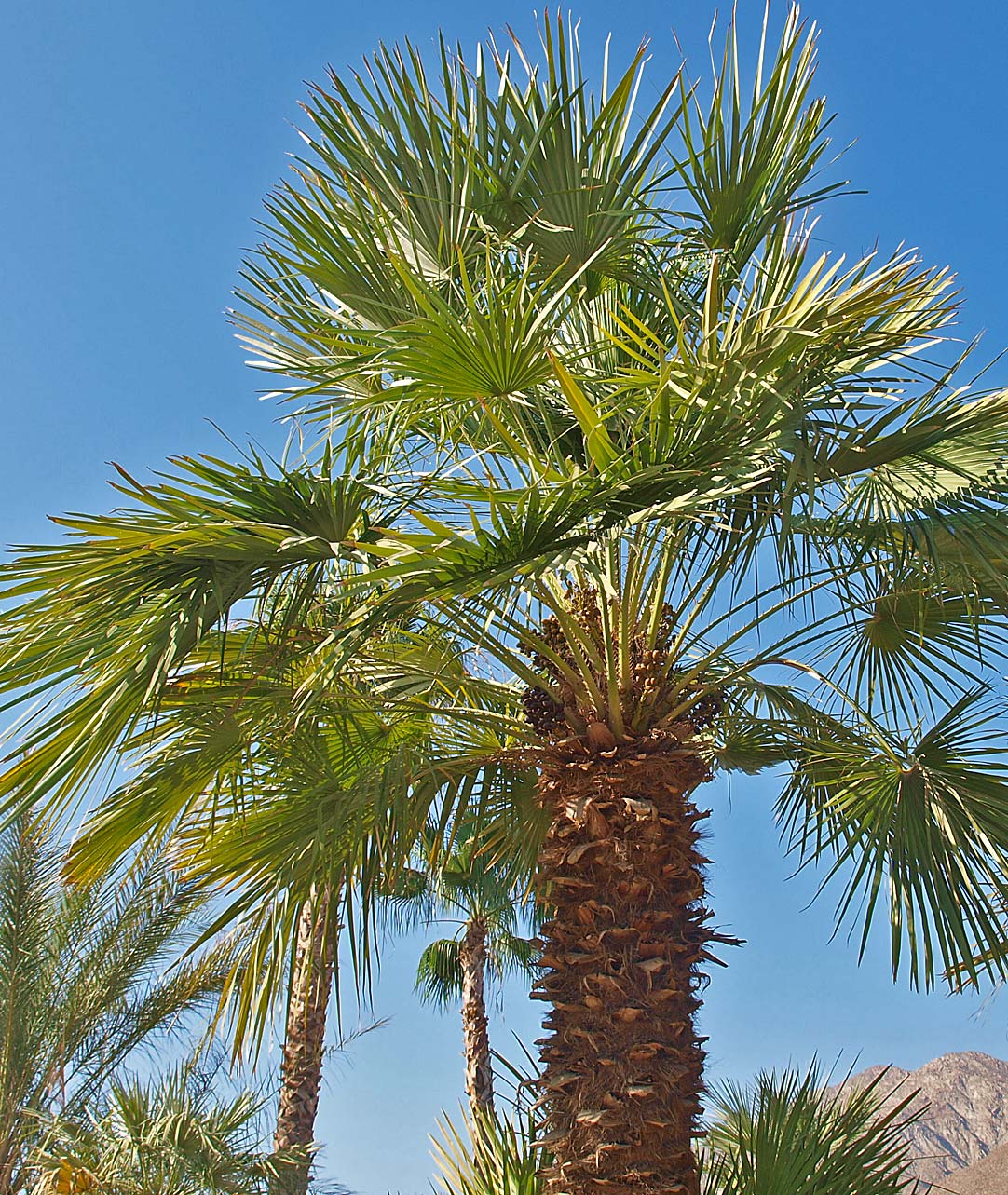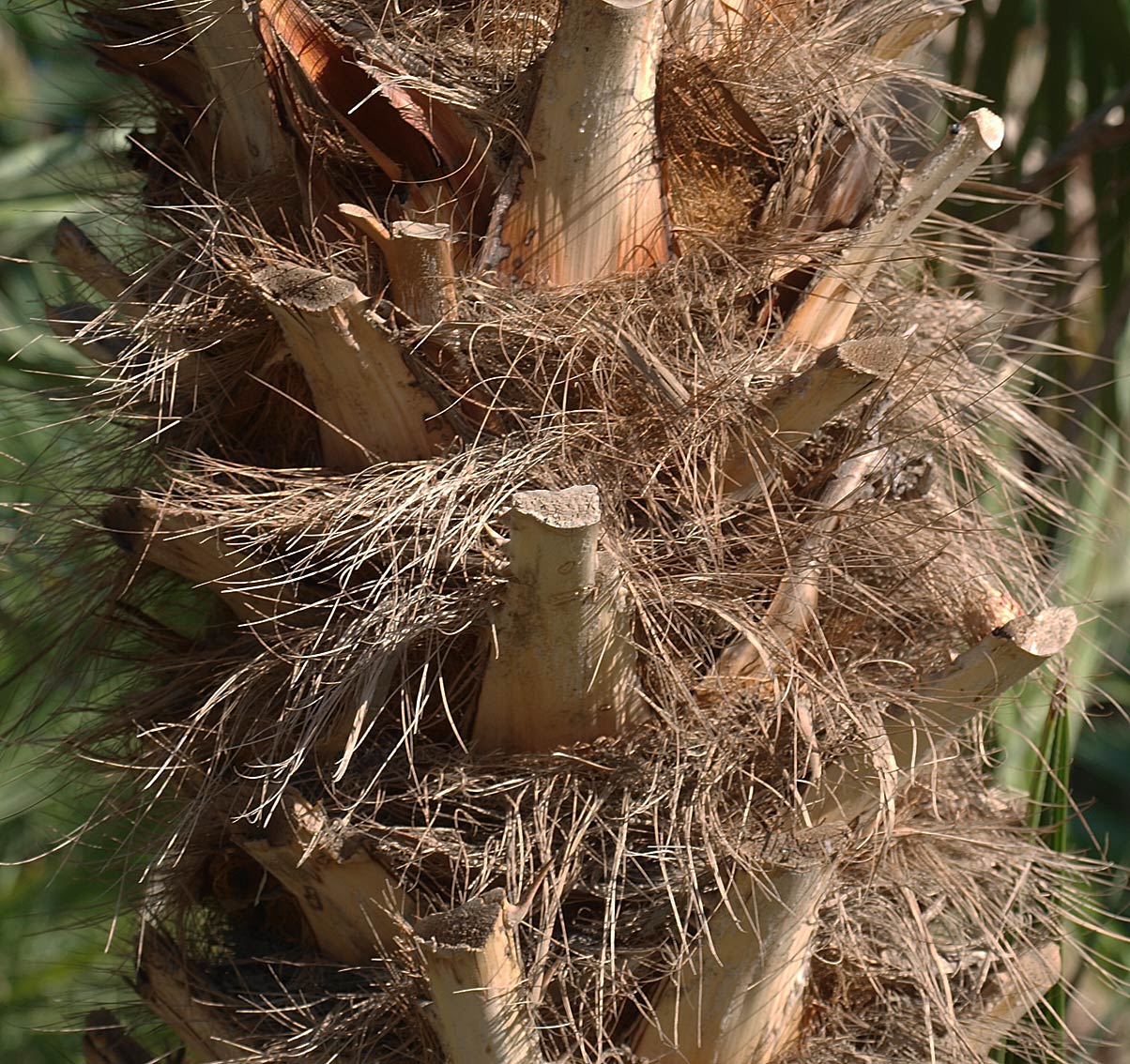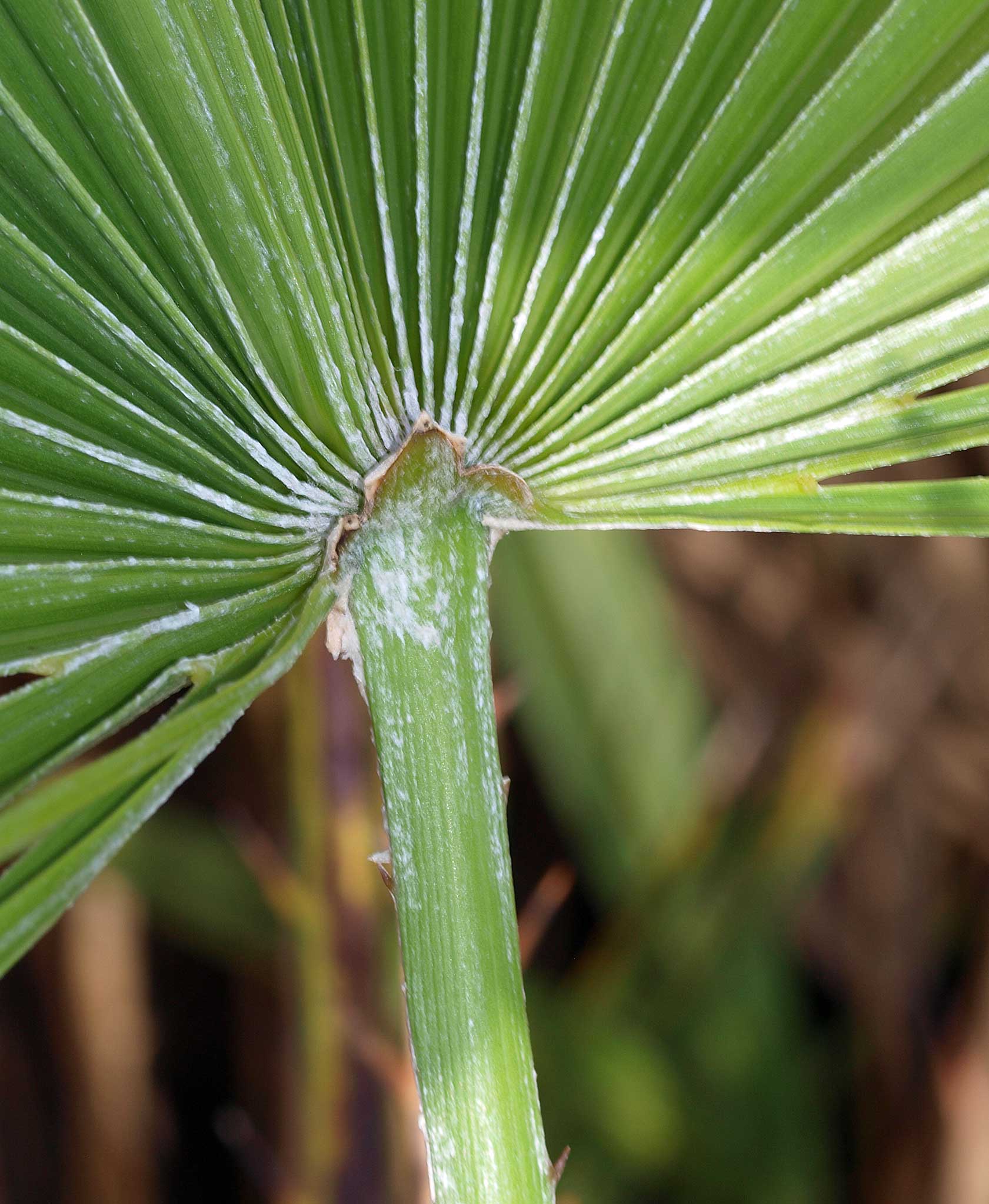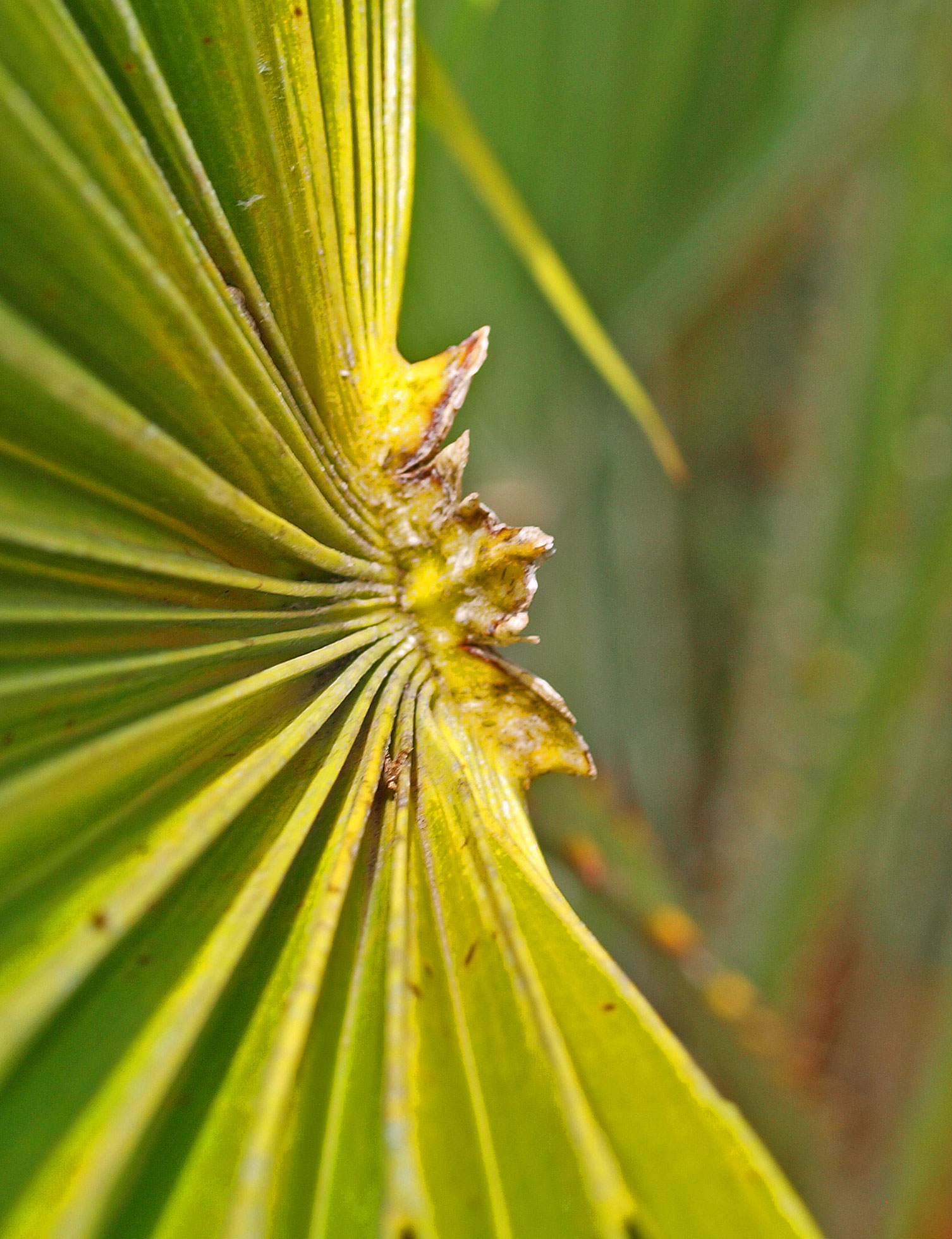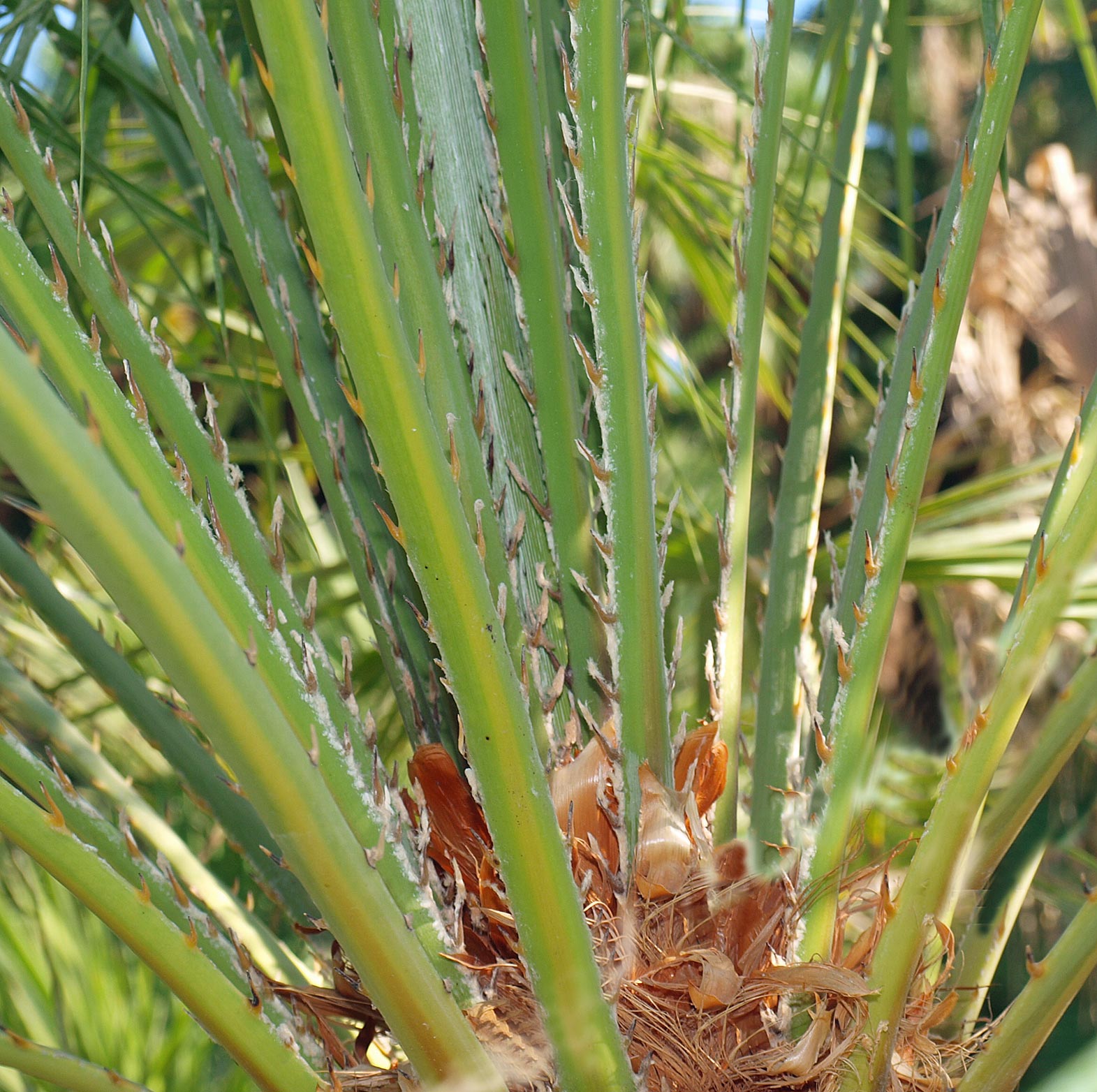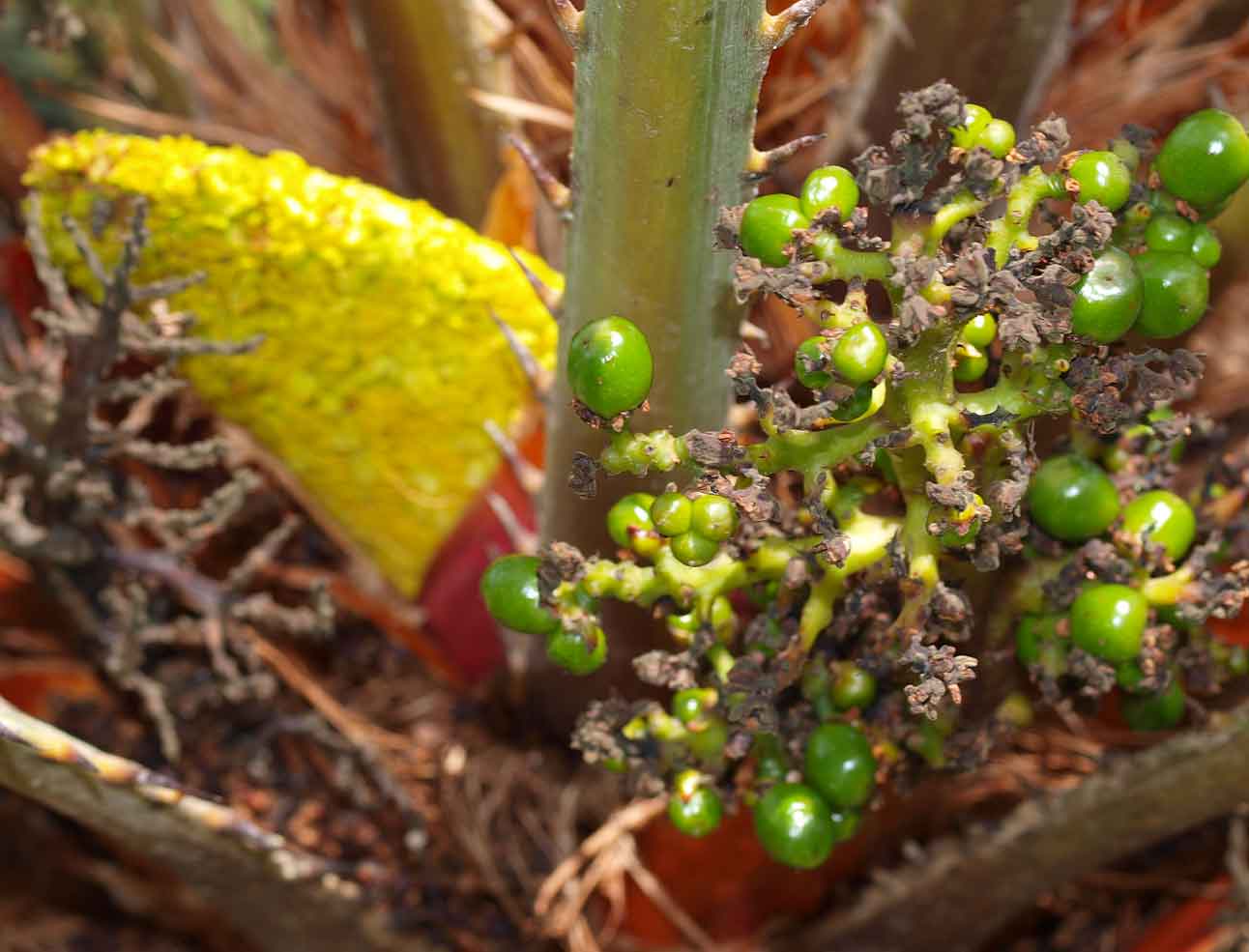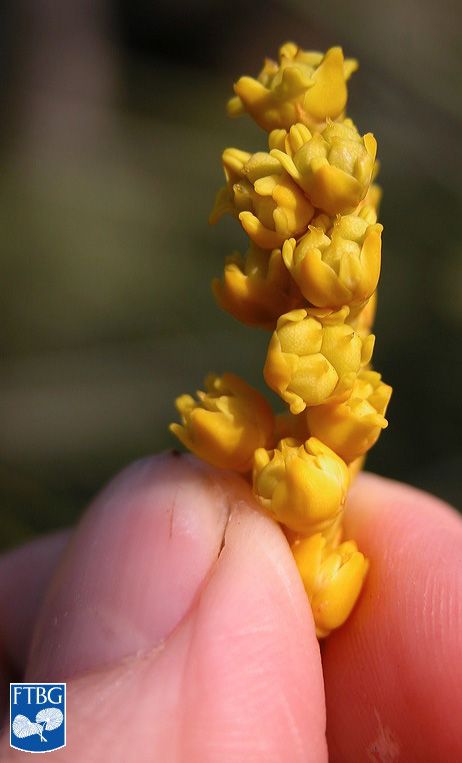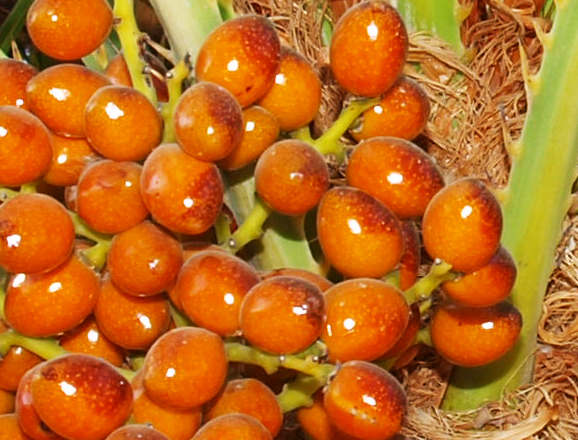Chamaerops humilis
|
Chamaerops humilis habit of clumping form |
|
Chamaerops humilis canopy of solitary form |
|
Chamaerops humilis close view of stem |
|
Chamaerops humilis hastula and white tomentum on leaf and petiole |
|
Chamaerops humilis hastula (view from above leaf) |
|
Chamaerops humilis petioles with spines |
|
Chamaerops humilis inflorescence and fruit |
|
Chamaerops humilis flowers. Photograph courtesy of Fairchild Tropical Botanical Garden, Guide to Palms http://palmguide.org/index.php |
|
Chamaerops humilis ripening fruit |
|
Chamaerops humilis close view of ripening fruit |
Common name
European fan palm, Mediterranean fan palm
Description
Stems: Clustering, to 3 m tall, but sometimes solitary and to 7 m tall, and about 30 cm in diameter, covered with dead leaves and persistent fibers. Leaves: Palmatepalmate:
like the palm of a hand; fan palms have palmate leaves that are usually divided into leaf segments arising from a central point, although a fan palm may have entire leaves (e.g., <em>Licuala grandis</em>)
, induplicateinduplicate:
Most palm leaflets or leaf segments are obviously folded. If the folds create a V-shape, with the midrib lower than the margins (so that rain might fall "into a valley"), the folding is induplicate.
, up to 1 m across and divided to over half the length of the blade with leafleaf:
in palms -- the leaf blade (which is usually divided into leaflets or leaf segments), the petiole (or leaf stalk) and the sheath (which forms the attachment of the leaf to the stem)
segments that have deeply split tips. Leaves may be dull or glossy green, blue-green or silver. Petioles are armed with upward-pointing spines along the margin and covered with white tomentumtomentum:
a covering of closely matted or fine hairs on plant leaves
. The prominent adaxialadaxial:
toward the axis or the side of an organ facing toward the axis (<strong>ad </strong>as in <strong>ad</strong>here); for example, the upper surface of a leaf blade or petiole
hastula is symmetrical and arrow-shaped. Flowers and fruits: Inflorescences may be staminatestaminate:
a flower bearing stamens but no pistils; a “male” flower
, pistillatepistillate:
a flower bearing a pistil but no stamens; a “female” flower
and occasionally hermaphroditic; all are about 15 cm long, branched to two orders. Yellow male and female flowers are borne on different plants (usually). The spherical to oblong fruits, 1-1.5cm in diameter, may be yellow, orange, or brown when ripe.
Diagnostic features
Field: Palmatepalmate:
like the palm of a hand; fan palms have palmate leaves that are usually divided into leaf segments arising from a central point, although a fan palm may have entire leaves (e.g., <em>Licuala grandis</em>)
leaves with robust but elegant spines and prominent hastula
May be confused with
Serenoa repens is also palmatepalmate:
like the palm of a hand; fan palms have palmate leaves that are usually divided into leaf segments arising from a central point, although a fan palm may have entire leaves (e.g., <em>Licuala grandis</em>)
with a spiny petiole, but the teeth are small and crowded along the margin. Acoelorrhaphe wrightii is similar, but the petiole spines are short and may be curved to point upward or downward.
Distribution
Native to the Mediterranian basin
Additional comments
A form of this palm with silvery, waxy leaves is sometimes called Chamaerops humilis variety cerifera. The palms with a solitary, rather than clumping, habit are sometimes sold as Chamaerops humilis var. elatior. This species is among the more cold-tolerant palms.
Scientific name
Chamaerops humilis L.
Family
Arecaceae/Palmae
Synonyms
Chamaerops arborescens Steud.
Chamaerops bilaminata Hort. ex Gentil
Chamaerops comesii Dammann ex Becc.
Chamaerops conduplicata Kickx
Chamaerops elata Hort.
Chamaerops macrocarpa Tin.


